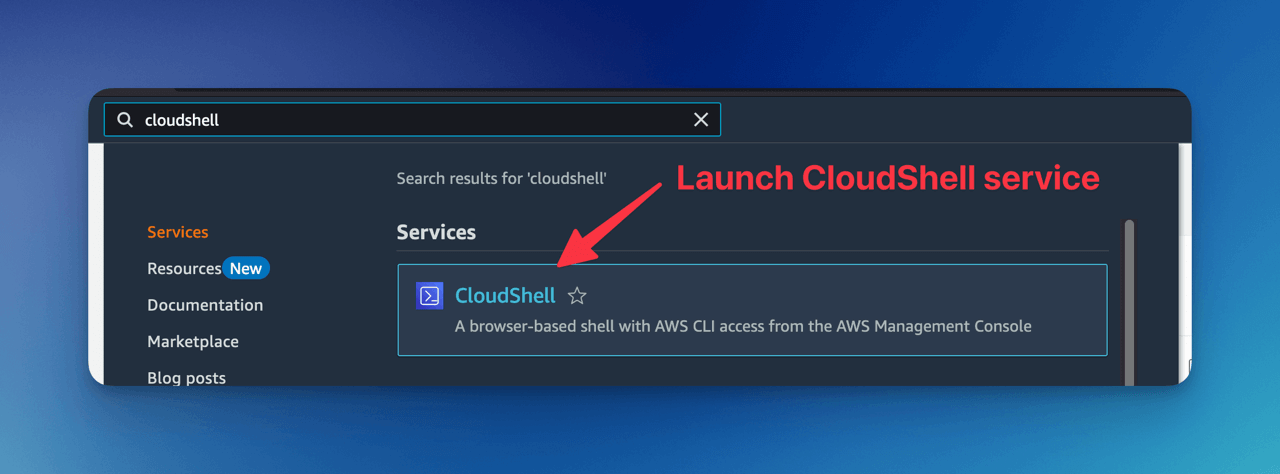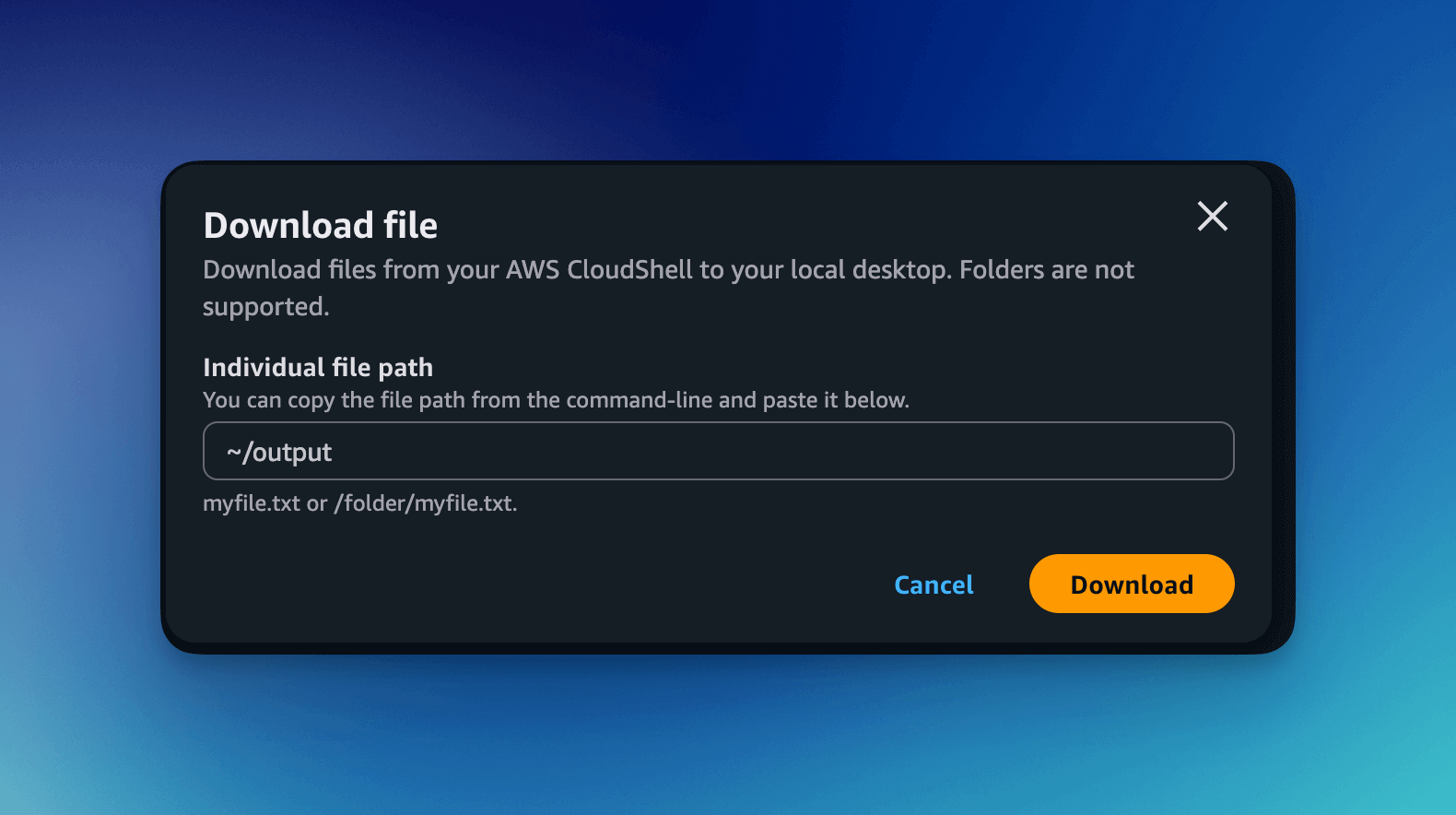CloudFormation Troubleshooting
This tutorial shows you how to use AWS CloudShell to run a helper script (list-cfn-events.sh) that gathers and displays all CloudFormation events. This will show you how to quickly zero in on the resource and error message responsible for a deployment failure.
Open AWS CloudShell
-
Sign in to the AWS Management Console.
-
Click the CloudShell icon in the top navigation bar (looks like a “>_” prompt).

Download the Script
In CloudShell’s terminal, download the pre-built script:
curl -O https://docs.formkiq.com/scripts/list-cfn-events.sh
chmod +x list-cfn-events.sh
The chmod +x command sets the script’s execute permission bit, making it executable so you can run it directly with ./list-cfn-events.sh.
Run the Script
Execute the script, passing your root stack’s name and saving the output into a file:
./list-cfn-events.sh my-root-stack-name > output
You’ll see output like:
========================================
CloudFormation Events for Stack:
my-root-stack-name
(since 2025-06-14T14:30:22Z to now)
========================================
2025-06-14T15:02:10Z MyBucket CREATE_COMPLETE AWS::S3::Bucket -
2025-06-14T15:01:58Z MyBucketPolicy CREATE_FAILED AWS::S3::BucketPolicy Policy already exists
…
The script then repeats the header-and-events block for each nested stack.
The output file can be downloaded by selecting Download File under the Actions menu.

Interpret the Results
-
Look for *_FAILED statusesAny line where the Status column ends in _FAILED indicates the resource that caused the rollback or failure.
-
Read the Status ReasonThe final column often contains the AWS-reported error message (e.g. “Policy already exists”, “Access denied”, etc.).
-
Nested Stack ContextIf the failure occurs inside a nested stack, you’ll see it under that nested stack’s header—so you know exactly which template and resource need fixing.